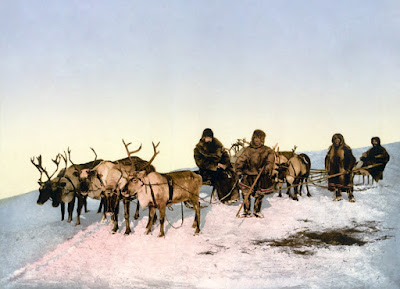My Method for Recording Breakage
Patterns in Bones
I recently have been tasked with analysing the
zooarchaeological assemblage at Westward House. Myself and my tutor performed
an initial assessment of the assemblage, and what immediately struck us was how
consistently the bones were broken in specific places. I knew that this would
be a major aspect of the assemblage, and set about looking at ways to record
these breakages. To my surprise, there was little work creating a recording
method to accurately say how many bones were broken in a certain way... So I
created my own!
What are ‘Breakage Patterns’ and Why
record them?
Breakage patterns describe how the bone is broken, for
example a humerus can be transversely split along the shaft. The breakages that
are recorded are not modern damage, so they were not caused by the excavators!
And they also are not gnawed of ends of butchered bits of bones, they are bones
which have been broken in the past, ‘Ancient Breaks’, that may have been caused
by humans or other taphonomic devices.
Because it is unknown what causes ancient breaks I
believe it is very important to record them, to see any patterns emerging from
the assemblage. For example, although I have only recorded around 300/400 bones
so far from Westward House, I am already noticing patterns from the site that I
would like to be able to quantify and interpret. For example longditidually
split long bones are paticaularly common, which could have been due to
individuals deliberately breaking them to extract marrow (See Figure 1).
Another pattern I have noticed is transverse breaks through the distal and
proximal shafts of metapodials (See Figure 2), although I haven’t been able to
work out why this is yet, a method to record these will at least go to prove that
this is far too commonly occurring to be a natural coincidence, and something
strange is going with Cow feet!
Figure 1: Longitudinally Broken Long Bones from Westward
House
Figure 2: One of many Transversely broken Metapodials from
Westward House.
How my Method works and How to Interpret
the Results?
My
method creates a three/four letter code that can be applied to any type of
breakage pattern. The first one/two letters represent what element the breakage
occurs on e.g. S for Scapula. The next section
is a number which represents what ‘zone’ (Area of the bone) is broken,
e.g. a S1 is the glenoid cavity of a scapula. Although this might seem
complicated, it is set out so a description of the zone can be read, and it
follows the zonation scheme set out originally by Hambleton and Maltby, who
have provided pictures to make it easy to follow!
Figure 3: An example of the coding system. Column 1 is the
Elements name. Column 2 is the code to use for the element. Column 3 is a
description of the zone, and Column 4 is what code to use for the zone.
The last piece of the code
is to describe what the break looks like (See figure 4), which will be the last
letter of the code. So S1T would be a transverse break across the glenoid
cavity of a scapula.
Figure 4: Example Code for the breakage pattern type
This information can allow
certain types of breakage patterns to be easily quantified in a number of ways.
The simplest way is to count which is most common, e.g. 15 of H5T vs only one
H1L would show a trend towards transverse breaks in distal Humerus. This can be
further quantified to shows differences between phases of the site and even
differences between feature types, which I will both be experimenting with at a
later date. Once you have quantified it, patterns may start to appear, and once
they do, how you interpret them is down to you!
I have not included the full the recording scheme due to
myself continuously developing the scheme and working on it to get to a
publishable state. If you are interested in using the recording scheme for your
own work though, give me a shout on my email (Found in my about me section) and
I will be happy to give you a copy!

























